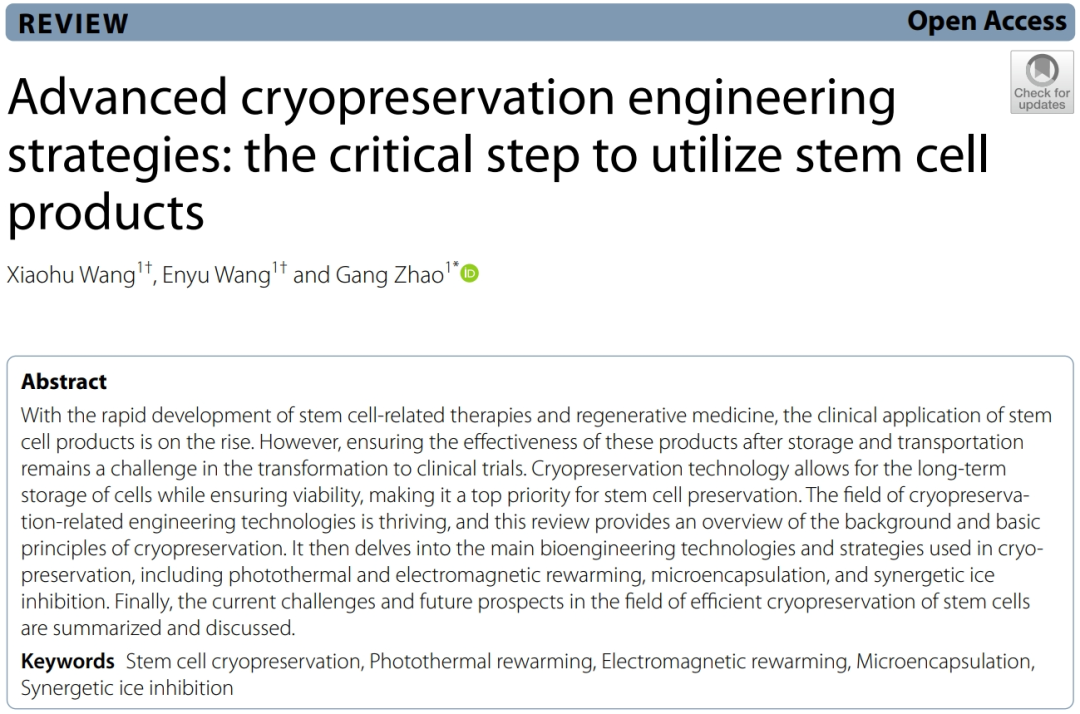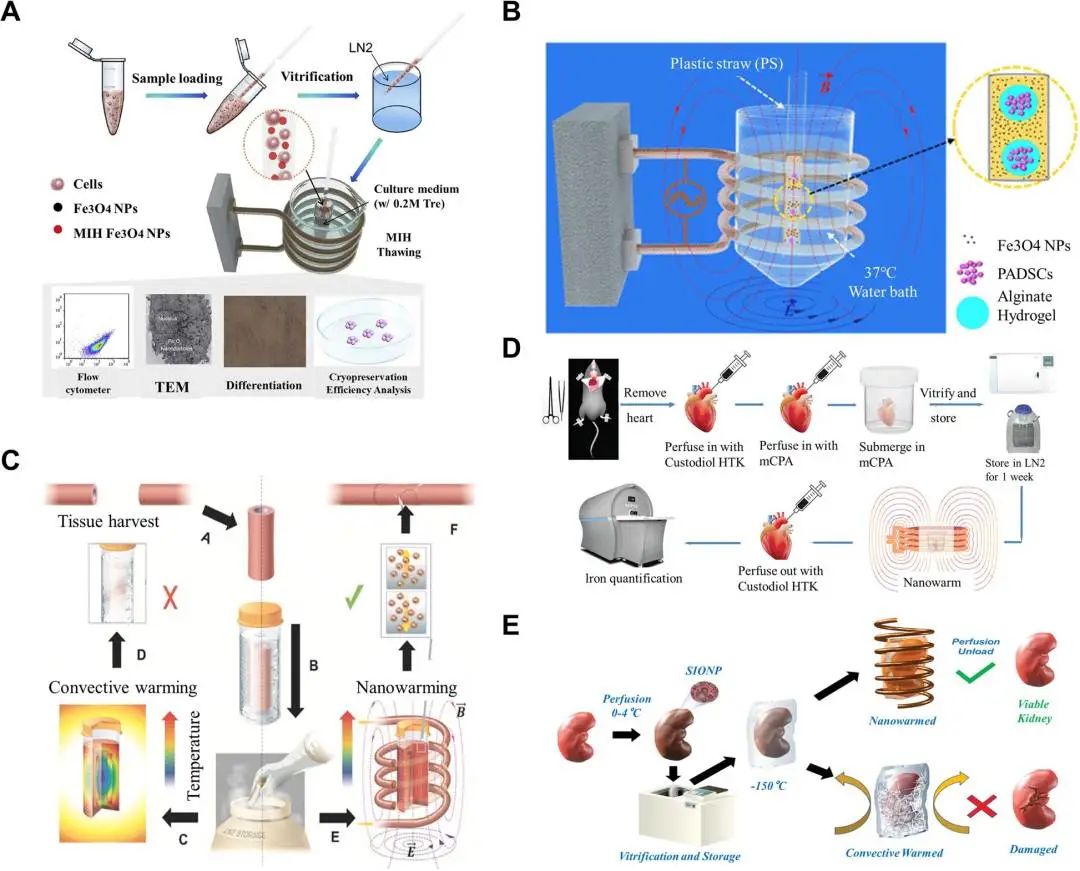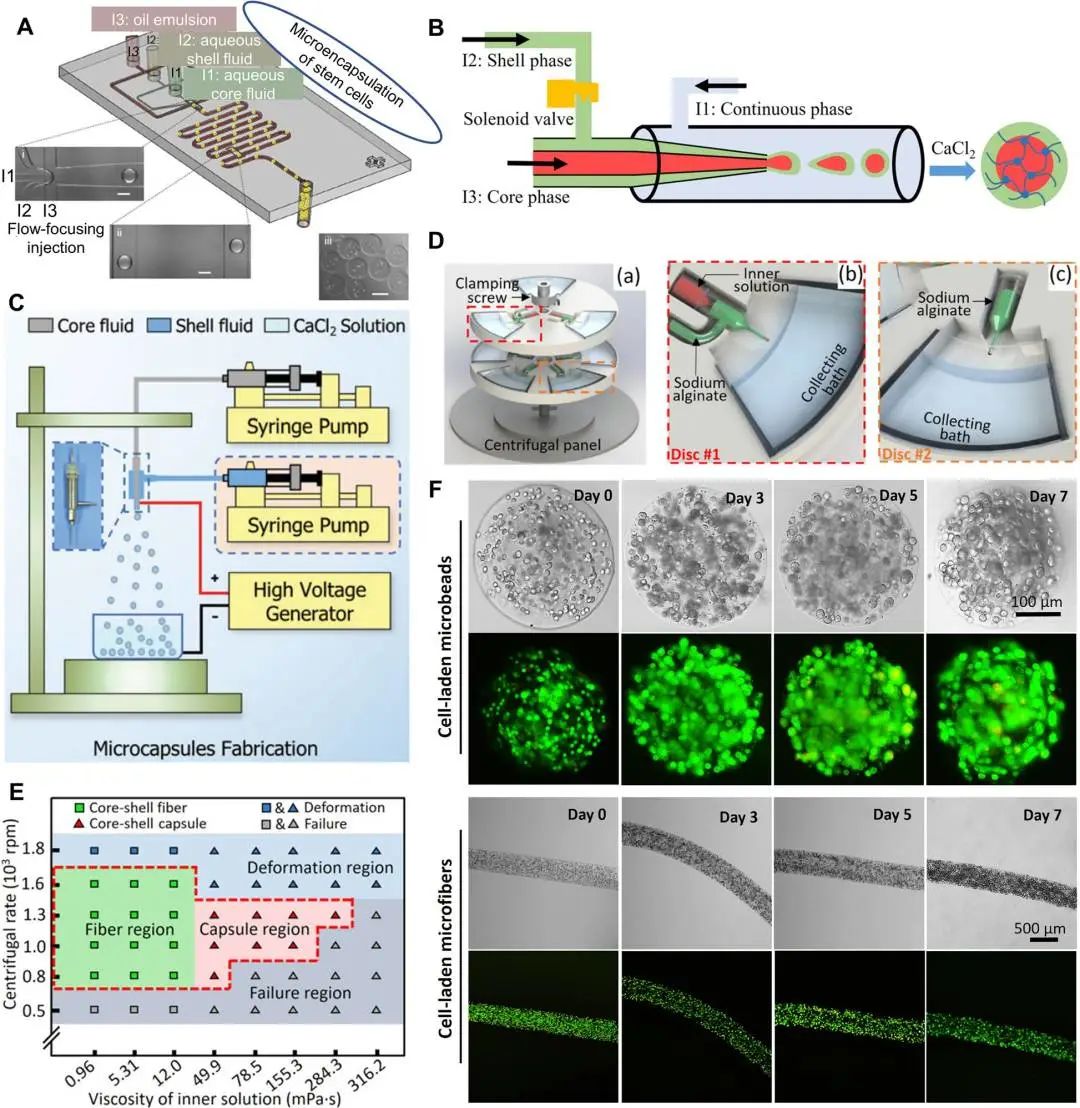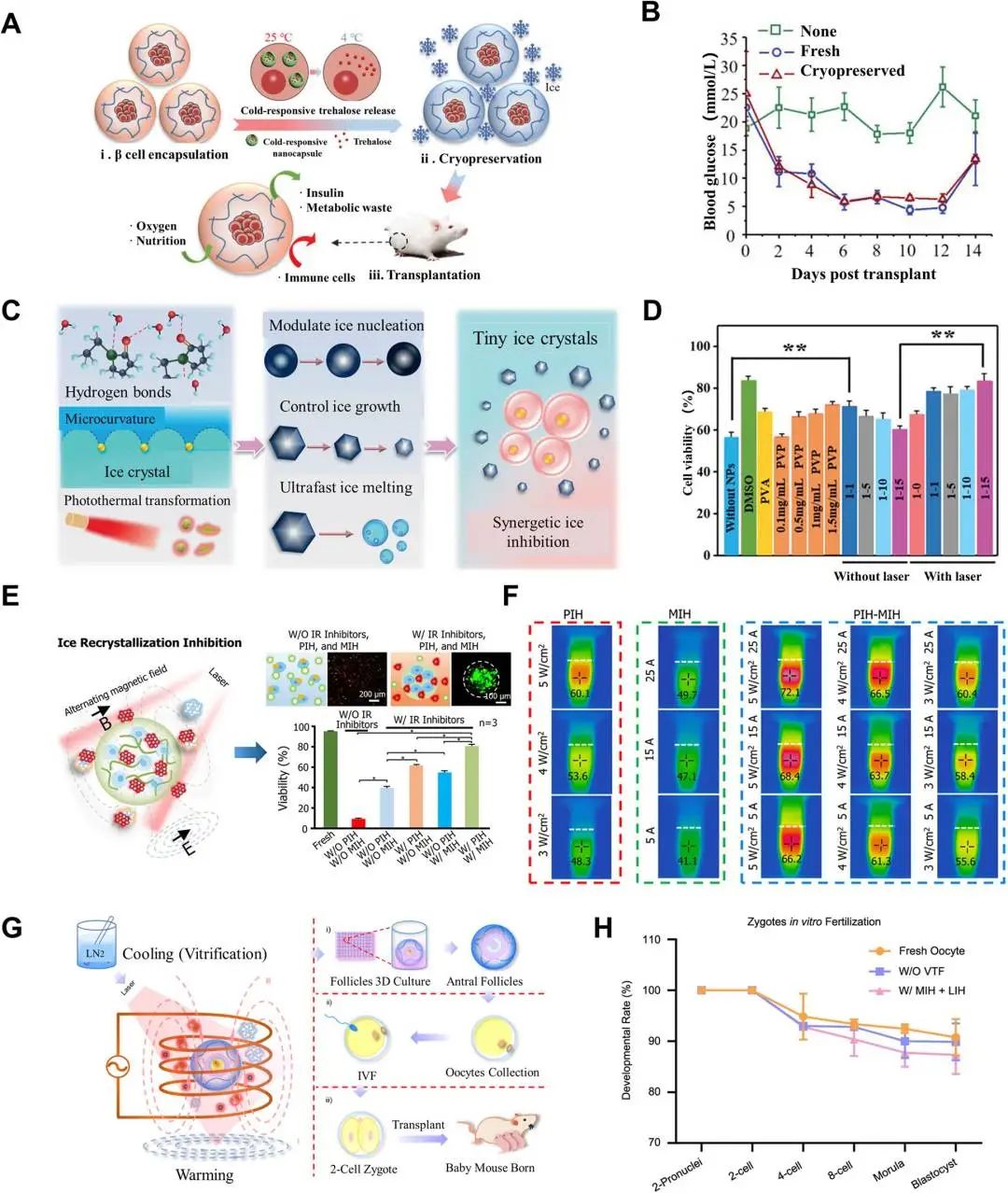
Source: Cell Regen Editorial Department
cryopreservation is the main preservation method of biological samples, which has been widely used in the long-term high-quality preservation of living cells, tissues, living cell constructs or cultures (tissue engineered tissues, organoids, organ chips, etc.). With the rapid development of many fields such as regenerative medicine, tissue engineering and cell therapy, efficient and low-cost cryopreservation technology is becoming increasingly important.
The effect of low temperature preservation is affected by many complicated factors, and is also closely related to the sample itself and external control. Gang Zhao of the University of Science and Technology of China recently published a paper on Cell Regeneration entitled "Advanced cryopreservation engineering strategies: the critical step to utilize stem cell products ". In this paper, the background and principle of cell cryopreservation were reviewed comprehensively, and the common engineering techniques for cell cryopreservation were summarized, including photothermal, magnetothermal and microencapsulation, and a collaborative ice suppression strategy was proposed. In addition, this paper summarizes the current situation of stem cell cryopreservation, and points out the challenges, opportunities and prospects of stem cell cryopreservation in the context of the rapid development of interdisciplinary fusion.

Cryopreservation is an important technology for the long-term preservation of cells, tissues, organs and other biological materials at extremely low temperatures (-80 ° C or -196 ° C). Under low temperature conditions, chemical and biological reactions in living cells are significantly reduced, or even stopped, which is the fundamental mechanism to achieve long-term preservation of various biological samples.
In the process of rewarming biological samples, thermal stress damage and ice crystal damage are often fatal, which is especially obvious in large-scale sample preservation. photothermal rewarming and electromagnetic rewarming technologies based on external physical fields have made great progress in inhibiting ice crystal growth and eliminating thermal stress during the rewarming process. Nanoparticles have excellent photothermal conversion performance, and the combination of near-infrared light can provide an ultra-fast heating platform, effectively inhibit recrystallization and de-vitrification during the process of millimeter cryopreservation and rewarming, and achieve efficient preservation of cells and zebrafish embryos.
Magnetic iron oxide nanoparticles such as Fe3O4 can quickly convert external magnetic energy into heat energy. Gang Zhao's research group introduced magnetic nanoparticles into low temperature preservation for the first time in the world, and achieved remarkable results: For small-scale biological samples such as cells and tissues, adding nanoparticles to the protective agent can increase the heating rate under the action of magnetic field, which can inhibit recrystallization and anti-glass; For large-scale samples such as organs, the nanoparticle is evenly distributed inside the sample by means of perfusion, and uniform and rapid rewarming is achieved by magnetic field heating, which can effectively inhibit thermal stress loss and ice crystal damage. Electromagnetic rewarming is an effective strategy for cryopreservation and has the potential to preserve biological samples of various scales.

Electromagnetic rewarming of cryopreserved biological samples
In recent years, various advanced hydrogel microcapsule technologies have emerged. The paper focuses on the commonly used cell microencapsulation methods, including conventional microfluidics, electrostatic spraying and centrifugal microfluidics. By adjusting different parameters, the desired microcapsules or fibers can be obtained. Microencapsulation can be used as a basic technology in combination with other ice suppression technologies to achieve multiple ice suppression effects.

Microencapsulation/encapsulation of living cells (living cell constructs)
Based on this, we propose an engineering strategy of collaborative ice suppression, that is, two or more advanced engineering technologies are effectively integrated into the field of cryogenic preservation, and synergistic effects are achieved in the process of cooling and rewarming to achieve high-quality preservation of biological samples. For example, we combined microencapsulation, photothermal reheating and magnetic thermal reheating techniques to achieve high viability preservation of islet cells, stem cells and mouse follicles, which has important practical significance.

Coordinated ice suppression
In summary, this paper discusses the main mechanisms of freezing damage during cell cryopreservation and rewarming, and introduces a series of advanced engineering ice suppression techniques, including photothermal, magnetothermal rewarming, cell encapsulation and collaborative ice suppression. These engineering strategies have several advantages in stem cell cryoppreservation, with hydrogel encapsulation playing an important role in industrial applications and hydrogel scaffolds loaded with stem cells already playing an important role in cell therapy, tissue engineering and regenerative medicine. In addition, for cryogenic storage of gross hydrogel stem cell products, combined with electromagnetic rewarming can further improve the survival rate. Given the irreplaceable properties of stem cells in tissue engineering and regenerative medicine, it is believed that advanced stem cell cryopreservation engineering strategies will keep up with the demand and bring about a thriving future for regenerative medicine.